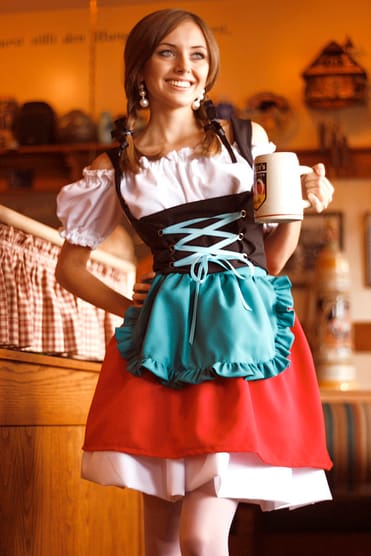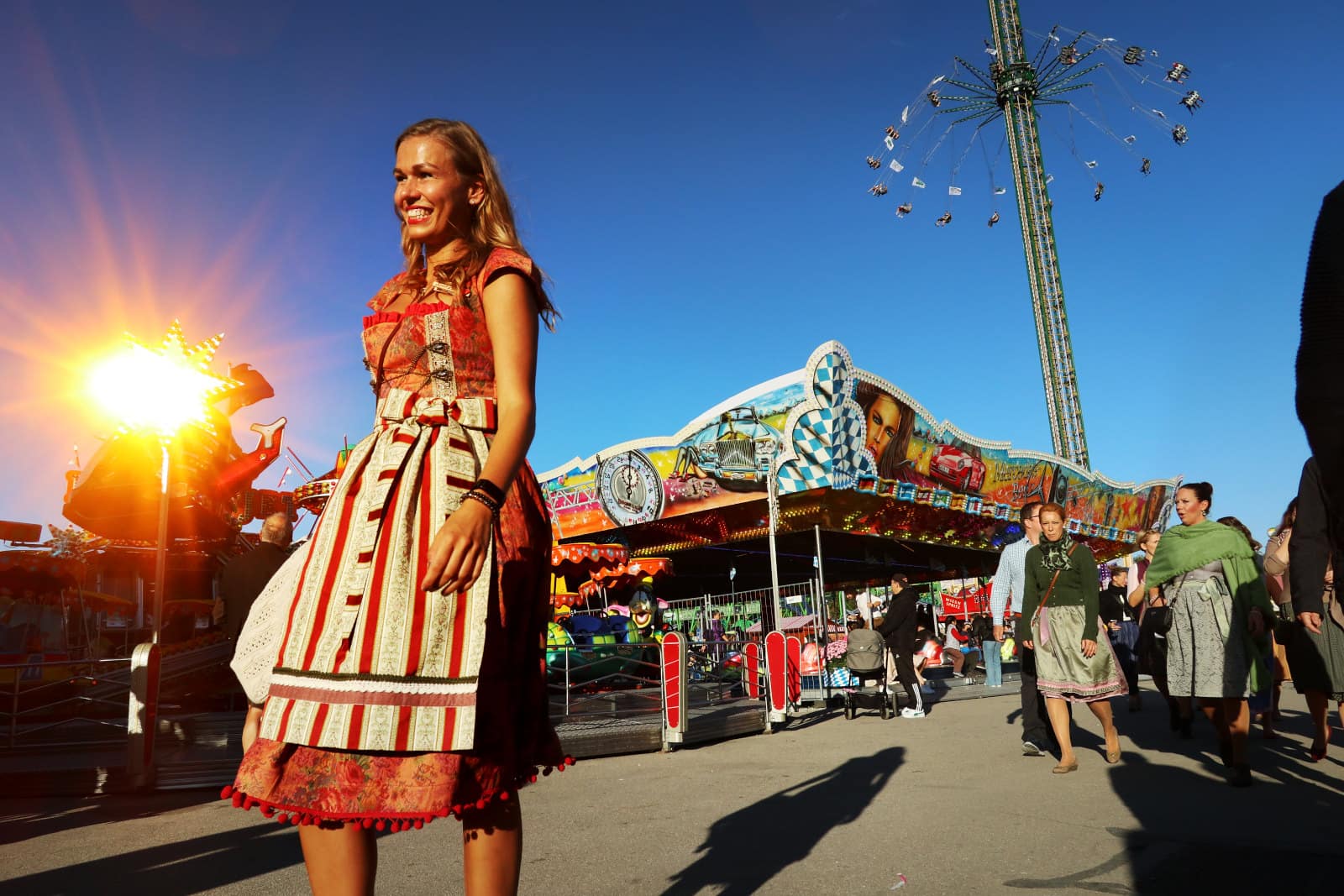One of the most fascinating aspects of what a dirndl is lies in the apron knot. How and where the dirndl’s apron is knotted is not just a fashion statement, it’s a non-verbal communication of one’s marital status. So, what does the knot mean on a Dirndl?
The Significance of the Dirndl Apron Knot
- If the knot is tied on the right side, it means that the wearer is married or engaged.
- A knot tied on the left side signifies that the wearer is single.
- A knot tied at the back means that the wearer is widowed or a waitress.
- A knot tied at the front centre is typically worn by children.

Another essential aspect is the length of the dirndl. Traditional dirndls come in three lengths: short (above the knee), midi (below the knee) and long (ankle length). The shorter versions are typically worn by younger women, while the longer ones are chosen by older women or for more formal occasions.
Lastly, while wearing a dirndl, it’s crucial to wear the traditional blouse underneath. The blouse is typically white, cropped and designed to fit under the dirndl comfortably. The neckline of the blouse often coincides with the dirndl’s neckline to showcase the traditional look.
Dirndl Knot Meanings – A Summary Table
Here’s a summary of the dirndl etiquette:
| Etiquette | What it Means |
|---|---|
| Apron knot on the left | Single |
| Apron knot on the right | Married/In a relationship |
| Apron knot in the middle front | Virgin |
| Apron knot at the back | Widowed |
| Short Dirndl | Worn by younger women |
| Midi/Long Dirndl | Worn by older women or for formal occasions |
| Traditional Blouse | A must to complete the look |
Remember, wearing a dirndl is all about embracing and respecting the Bavarian culture. So, when you are at the Oktoberfest, donning your dirndl, raising your stein, remember to echo the traditional toast, Oans, zwoa, g’suffa (one, two, down the hatch)!

